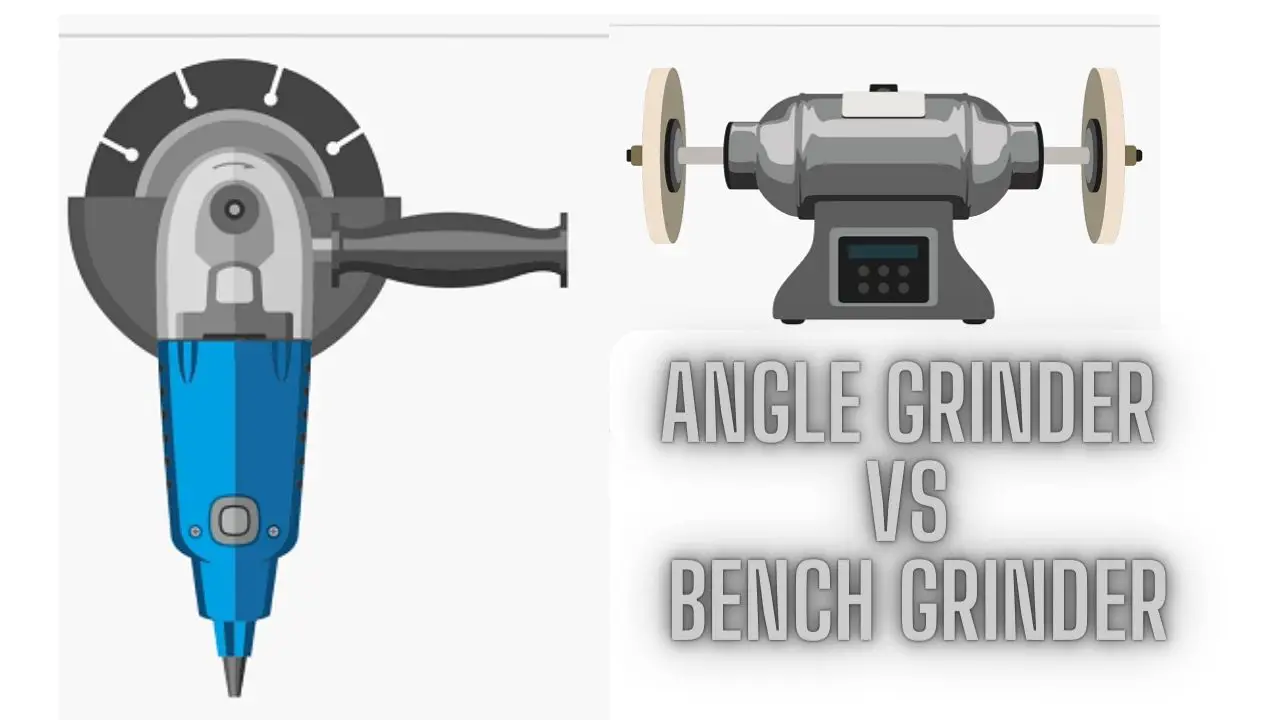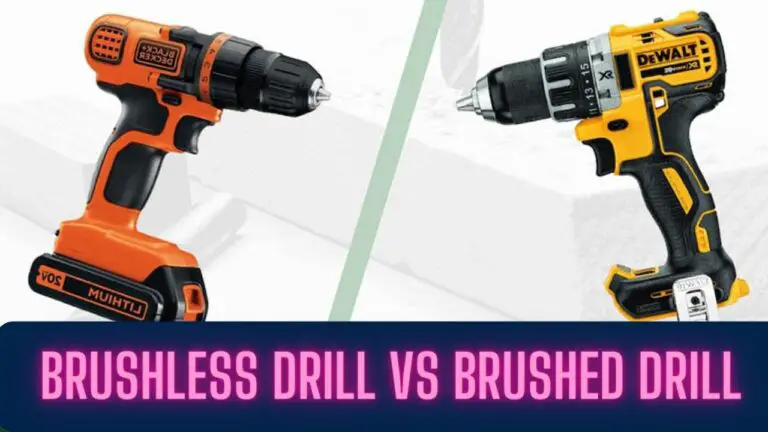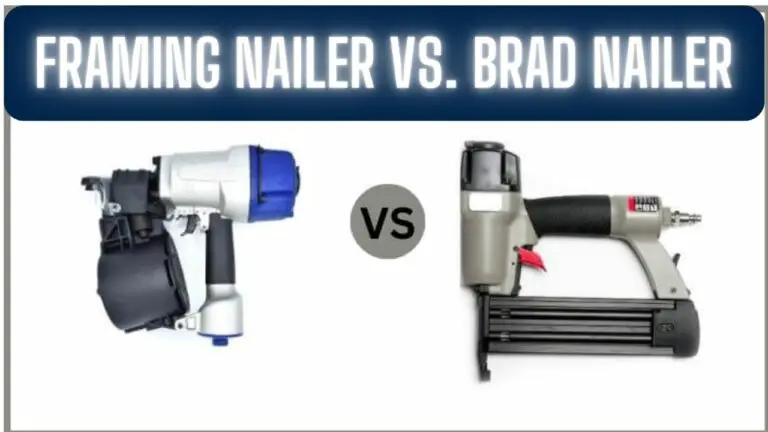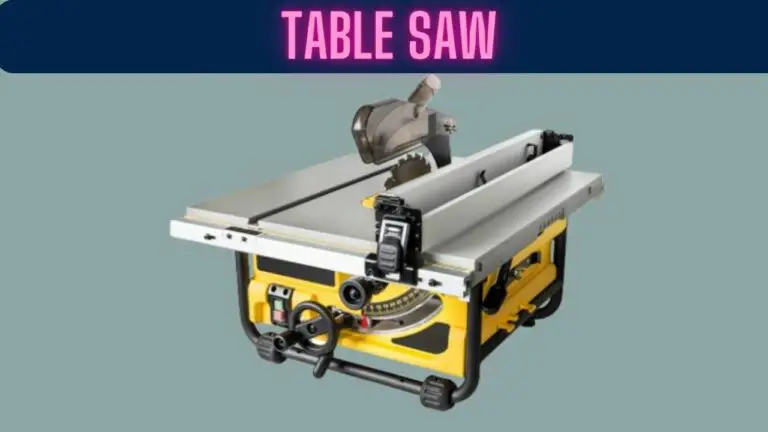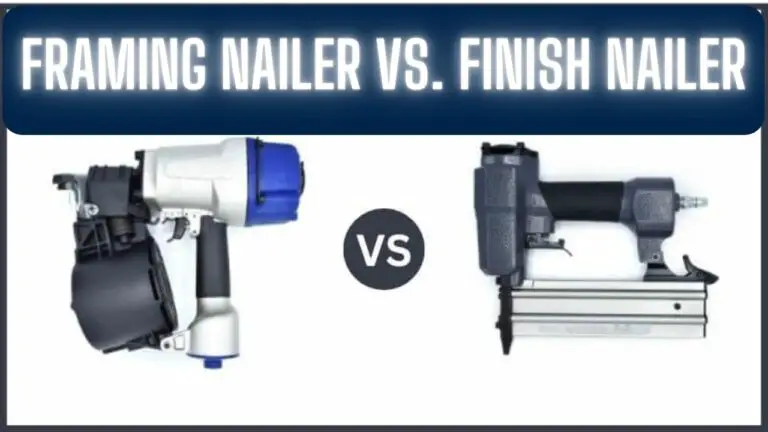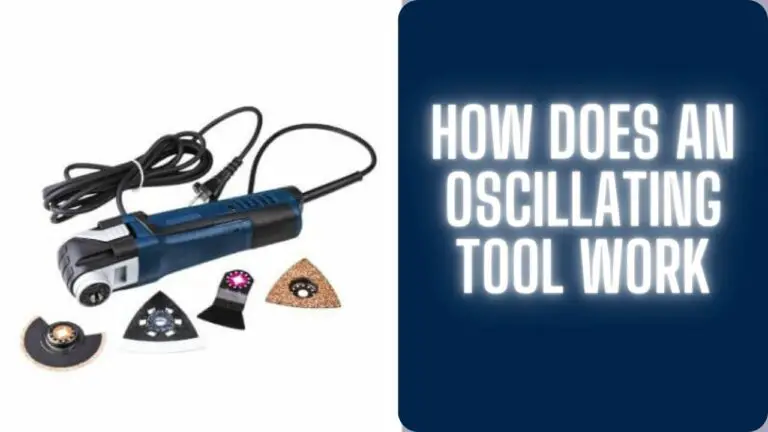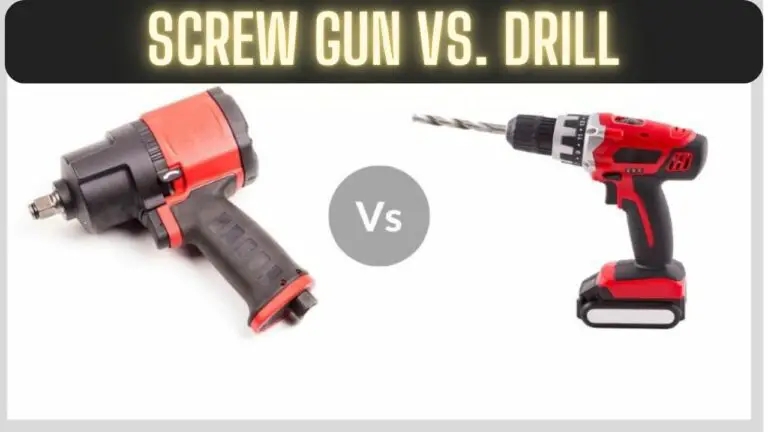Angle Grinder vs Bench Grinder: Choosing the Right Tool for the Job
Introduction
Grinders are indispensable tools in various industries and workshops, serving a multitude of purposes from shaping and sharpening to polishing and grinding. Among the different types available, two prominent ones are the angle grinder and the bench grinder. Each has its unique features, applications, and advantages, making them suitable for specific tasks.
This comparison aims to provide an in-depth understanding of both angle grinders and bench grinders, highlighting their functionalities, applications, pros, and cons. By exploring these aspects, users can make informed decisions about which grinder best suits their needs based on factors like portability, precision, safety, and cost. Whether you’re a professional tradesperson or a hobbyist, understanding the differences between these two types of grinders will help you choose the right tool for your projects.
Angle Grinder
Description and Functionality
An angle grinder is a versatile handheld power tool primarily used for cutting, grinding, polishing, and shaping various materials such as metal, stone, concrete, tile, and more. It consists of several key components that enable its functionality:
- Motor: The angle grinder is powered by an electric motor that drives a spindle, onto which abrasive discs or wheels are mounted. The motor provides the rotational power necessary for grinding and cutting operations.
- Spindle: The spindle is the rotating shaft onto which different types of abrasive discs or accessories can be attached. These discs include grinding wheels, cutting discs, wire brushes, flap discs, and sanding discs, among others. The spindle’s design allows for quick and easy swapping of discs to accommodate different tasks.
- Adjustable Guard: Most angle grinders feature an adjustable guard that covers a portion of the abrasive disc. This guard serves to protect the user from sparks, debris, and accidental contact with the rotating disc during operation. The guard can be adjusted to suit the specific task being performed and the orientation of the grinder.
- Handle: Angle grinders typically have a side handle or auxiliary handle that provides additional grip and control during operation. This handle allows the user to stabilize the grinder and maneuver it more effectively, especially when exerting significant force or working in awkward positions.
- Trigger Switch: The grinder is equipped with a trigger switch located on the handle, which controls the activation of the motor. Depressing the trigger initiates the rotation of the spindle and abrasive disc, while releasing it stops the motor. Some models may also feature a lock-on feature for continuous operation without holding down the trigger.
- Power Cord or Battery: Angle grinders are available in both corded and cordless models. Corded grinders require connection to a power outlet via a power cord, providing continuous power supply for extended use. Cordless grinders, on the other hand, are powered by rechargeable batteries, offering greater portability and freedom of movement, albeit with limited runtime.
Overall, the angle grinder’s compact and ergonomic design, coupled with its versatility and power, makes it an essential tool in various industries such as construction, metalworking, fabrication, and automotive repair. Proper safety precautions, including the use of personal protective equipment (PPE) such as safety glasses, gloves, and hearing protection, are essential when operating an angle grinder to mitigate the risks associated with its high-speed rotating abrasive discs.
Applications of Angle Grinder
- Cutting Metal: Angle grinders are widely used for cutting metal workpieces such as pipes, rods, bars, and sheet metal. They can quickly and efficiently make straight cuts, curves, and intricate shapes in various metals, including steel, aluminum, and stainless steel. Cutting discs or abrasive cutoff wheels are commonly used for this purpose.
- Grinding and Smoothing Surfaces: Angle grinders are effective tools for grinding and smoothing surfaces, removing burrs, weld splatter, and imperfections from metal, concrete, stone, and other materials. Grinding wheels, flap discs, and wire brushes are commonly used attachments for surface preparation and finishing tasks.
- Removing Rust and Paint: Angle grinders equipped with wire brush attachments are ideal for removing rust, paint, and corrosion from metal surfaces. The high-speed rotation of the wire brush effectively strips away old paint and rust, leaving behind a clean and smooth surface ready for refinishing or repainting.
- Cutting Tiles and Masonry: Angle grinders with diamond blades or abrasive cutting discs are commonly used for cutting tiles, bricks, pavers, and other masonry materials. They can make precise cuts for tile installation, plumbing, and electrical work, as well as cutting out openings for vents, outlets, and fixtures.
- Sharpening Tools: Angle grinders can be used for sharpening various cutting tools and blades, including lawnmower blades, axes, chisels, and garden shears. Grinding wheels or sharpening attachments can be used to restore a sharp edge to dull or damaged tools, improving their cutting performance and longevity.
- Polishing and Buffing: With the appropriate polishing pads or buffing attachments, angle grinders can be used for polishing and buffing metal surfaces to a high-gloss finish. They are commonly used for automotive detailing, restoring chrome trim, polishing stainless steel, and buffing aluminum surfaces.
- Concrete and Masonry Work: Angle grinders equipped with diamond grinding wheels or cup wheels are essential tools for concrete grinding, smoothing, and finishing. They are used for removing imperfections, leveling uneven surfaces, and preparing concrete floors for coatings, overlays, or polishing.
- Woodworking: While primarily designed for metalworking applications, angle grinders can also be used for woodworking tasks such as shaping, carving, and sanding wood. Abrasive flap discs and sanding attachments can be used to smooth rough edges, shape wood profiles, and remove material quickly.
- Cutting and Grinding Plastics: Angle grinders equipped with specialized cutting discs or grinding wheels are used for cutting and grinding plastic materials such as PVC, acrylic, and fiberglass. They can be used for trimming plastic pipes, shaping plastic components, and removing excess material.
- General Construction and Fabrication: Angle grinders are versatile tools used in various construction and fabrication projects, including building construction, metal fabrication, welding, and DIY home improvement. Their ability to perform a wide range of tasks makes them indispensable tools on job sites and workshops worldwide.
Types of Angle Grinders
- Corded Angle Grinders: These angle grinders are powered by electricity and require a continuous power supply from a power outlet. They provide consistent power and are suitable for extended use without worrying about battery life. Corded angle grinders are commonly used in workshops, construction sites, and industrial settings where a power source is readily available.
- Cordless Angle Grinders: Cordless angle grinders are powered by rechargeable batteries, offering greater portability and freedom of movement compared to corded models. They are ideal for remote job sites, outdoor projects, and areas where access to power outlets may be limited. Cordless angle grinders provide flexibility and convenience but may have shorter runtime and less power compared to corded models.
- Pneumatic Angle Grinders: Pneumatic angle grinders, also known as air-powered angle grinders, operate using compressed air as their power source. They are commonly used in industrial and automotive applications where electricity may not be available or where a spark-free operation is required. Pneumatic angle grinders are lightweight, durable, and suitable for use in hazardous environments.
- Mini Angle Grinders: Mini angle grinders are compact and lightweight versions of standard angle grinders, designed for smaller tasks and tight spaces. They feature smaller abrasive discs and reduced power compared to full-sized angle grinders, making them ideal for light-duty grinding, cutting, and polishing tasks. Mini angle grinders are popular among DIY enthusiasts, hobbyists, and professionals working on intricate projects.
- Variable Speed Angle Grinders: Variable speed angle grinders allow users to adjust the rotational speed of the abrasive disc, providing greater control and versatility for different materials and applications. They are equipped with variable speed settings that allow users to select the optimal speed for cutting, grinding, or polishing tasks. Variable speed angle grinders are suitable for working on delicate materials, precision grinding, and achieving smoother finishes.
- Heavy-Duty Angle Grinders: Heavy-duty angle grinders are robust and powerful tools designed for demanding applications and continuous use in industrial and professional settings. They feature higher wattage motors, larger abrasive discs, and reinforced construction to withstand heavy loads and prolonged operation. Heavy-duty angle grinders are suitable for heavy metal fabrication, construction, and material removal tasks requiring high torque and durability.
- Angle Grinders with Safety Features: Some angle grinders come with built-in safety features designed to enhance user safety and reduce the risk of accidents. These features may include adjustable safety guards, safety switches, anti-kickback mechanisms, and vibration reduction technology. Angle grinders with safety features are recommended for beginners, inexperienced users, and applications where safety is a priority.
Advantages
- Portability: Handheld design allows for easy maneuverability, especially in tight spaces.
- Versatility: Capable of performing various tasks with different types of abrasive discs.
- Speed: Can achieve high rotational speeds, enabling efficient material removal.
- Accessibility: Widely available and suitable for both professionals and DIY enthusiasts.
Disadvantages
- Safety Concerns: Risk of injury due to the high-speed rotating disc, requiring proper handling and safety precautions.
- Limited Precision: Not suitable for precise or detailed work compared to stationary tools.
- Dust and Debris: Generates significant amounts of dust and debris, necessitating proper ventilation and protective gear.
- Fatigue: Prolonged use may lead to user fatigue due to the handheld nature of the tool.
Bench Grinder
Description and Functionality
A bench grinder is a stationary power tool consisting of a motor-driven grinding wheel(s) mounted on a bench or pedestal. It is primarily used for sharpening, deburring, shaping, and polishing metal tools and workpieces. Here’s a breakdown of its components and functionality:
- Motor: The bench grinder is powered by an electric motor that drives one or more grinding wheels mounted on a spindle. The motor provides the rotational power necessary for grinding and sharpening operations.
- Grinding Wheels: Bench grinders typically feature two grinding wheels, one with a coarse grit and the other with a finer grit. These grinding wheels are made of abrasive materials such as aluminum oxide or silicon carbide and are used for sharpening and shaping metal tools and workpieces. The coarse wheel is used for initial rough grinding and shaping, while the fine wheel is used for final sharpening and finishing.
- Tool Rest: The bench grinder is equipped with tool rests on each side of the grinding wheels. These tool rests provide support and stability for the workpiece during grinding operations, allowing for precise and controlled grinding. They can be adjusted to the desired angle and height to accommodate different tools and workpieces.
- Eye Shields: Most bench grinders come with adjustable eye shields mounted above each grinding wheel. These eye shields provide protection for the user’s eyes from sparks, debris, and flying particles generated during grinding operations. They can be adjusted to the desired position to provide maximum visibility and protection.
- Spark Guards: Some bench grinders are equipped with spark guards or deflectors mounted on the sides of the grinding wheels. These spark guards help contain sparks and debris generated during grinding, reducing the risk of injury and fire hazards. They also help protect the user and surrounding area from flying sparks and debris.
- Base: The bench grinder is mounted on a sturdy base or pedestal, providing stability and support during operation. The base is typically made of cast iron or steel and may feature rubber feet to reduce vibration and prevent slippage during use.
- Variable Speed Control (Optional): Some bench grinders come with variable speed control features that allow users to adjust the speed of the grinding wheels. Variable speed bench grinders offer greater versatility and control, allowing users to customize the grinding speed to suit different materials and applications.
Overall, the bench grinder’s robust construction, dual grinding wheels, and adjustable tool rests make it an essential tool for sharpening and shaping metal tools and workpieces in workshops, garages, and industrial settings. Proper safety precautions, including the use of eye protection, gloves, and hearing protection, are essential when operating a bench grinder to prevent accidents and injuries.
Applications of Bench Grinder
- Tool Sharpening: One of the primary applications of a bench grinder is sharpening various cutting tools and blades. This includes tools such as chisels, drill bits, axes, garden shears, lawnmower blades, and kitchen knives. The bench grinder’s abrasive wheels can quickly restore a sharp edge to dull or damaged tools, improving their cutting performance and longevity.
- Metal Deburring: Bench grinders are commonly used for removing burrs, sharp edges, and imperfections from metal workpieces. They can smooth out rough edges on metal parts and remove excess material left behind by machining or cutting processes. The abrasive wheels on a bench grinder can quickly grind down metal surfaces to achieve a smooth and uniform finish.
- Metal Shaping: Bench grinders can be used for shaping and profiling metal workpieces, such as creating beveled edges, chamfers, and contours. They are particularly useful for shaping small metal components or modifying the shape of metal parts to fit specific applications. The adjustable tool rests on a bench grinder provide support and stability for precise shaping and grinding operations.
- Polishing and Buffing: With the appropriate polishing accessories, bench grinders can be used for polishing and buffing metal surfaces to a high-gloss finish. Polishing compounds and buffing wheels are applied to the rotating grinding wheels to remove scratches, oxidation, and surface imperfections, leaving behind a shiny and reflective surface.
- Grinding Cement and Masonry: Bench grinders equipped with diamond grinding wheels or abrasive cup wheels can be used for grinding and smoothing concrete, stone, and masonry surfaces. They are commonly used for removing uneven patches, leveling rough concrete, and preparing surfaces for coatings or overlays.
- Woodworking: While primarily designed for metalworking applications, bench grinders can also be used for woodworking tasks such as shaping, sharpening, and sanding wood. Woodturners use bench grinders with specialized attachments to sharpen lathe tools and shape woodturning chisels. Bench grinders can also be used for sharpening woodworking tools such as chisels, plane irons, and gouges.
- General Maintenance and Repair: Bench grinders are versatile tools that find application in general maintenance and repair tasks around the home, garage, or workshop. They can be used for cleaning rusty metal parts, removing old paint or rust, and sharpening household tools and equipment. Bench grinders are indispensable tools for DIY enthusiasts, hobbyists, and professionals alike for a wide range of maintenance and repair tasks.
Types of Bench Grinders
- Standard Bench Grinders: These are the most common type of bench grinders, featuring two grinding wheels of different grits mounted on a bench or pedestal. They are versatile tools suitable for general-purpose grinding, sharpening, deburring, and polishing tasks in workshops, garages, and industrial settings.
- Variable Speed Bench Grinders: Variable speed bench grinders allow users to adjust the speed of the grinding wheels, providing greater control and versatility for different materials and applications. They are equipped with variable speed settings that allow users to select the optimal speed for cutting, grinding, or polishing tasks. Variable speed bench grinders are suitable for working on delicate materials, precision grinding, and achieving smoother finishes.
- Belt Grinders: Belt grinders are a specialized type of bench grinder that uses a sanding belt instead of grinding wheels. They offer greater versatility for shaping, grinding, and finishing metal and wood workpieces. Belt grinders are commonly used in metal fabrication, knife making, and woodworking applications. They provide faster material removal and more precise shaping capabilities compared to traditional bench grinders.
- Bench Grinder with Wire Wheel: Some bench grinders come with wire brush wheels or wire wheel attachments in addition to the standard grinding wheels. Wire wheel bench grinders are specifically designed for cleaning, deburring, and removing rust and paint from metal surfaces. The wire brush wheel effectively removes surface contaminants and prepares metal surfaces for welding, painting, or coating.
- Heavy-Duty Bench Grinders: Heavy-duty bench grinders are robust and powerful tools designed for demanding applications and continuous use in industrial and professional settings. They feature higher wattage motors, larger grinding wheels, and reinforced construction to withstand heavy loads and prolonged operation. Heavy-duty bench grinders are suitable for heavy metal fabrication, construction, and material removal tasks requiring high torque and durability.
- Bench Grinder with Safety Features: Some bench grinders come with built-in safety features designed to enhance user safety and reduce the risk of accidents. These features may include adjustable eye shields, tool rests, spark guards, and safety switches. Bench grinders with safety features are recommended for beginners, inexperienced users, and applications where safety is a priority.
- Wet Bench Grinders: Wet bench grinders use water as a lubricant and coolant during grinding operations, reducing heat and preventing overheating of the workpiece and grinding wheels. They are commonly used for sharpening and grinding high-speed steel (HSS) tools and cutting blades. Wet bench grinders are suitable for applications requiring precise and cool grinding, such as woodworking and metalworking.
Advantages
- Stability: Mounted on a bench or pedestal, providing stability and control during grinding operations.
- Precision: Ideal for precise grinding and sharpening tasks due to the stationary nature of the tool.
- Safety Features: Often equipped with safety guards and eye shields to protect users from debris and sparks.
- Cooling: Some models feature built-in cooling systems to prevent overheating during prolonged use.
Disadvantages
- Limited Portability: Bench grinders are stationary tools and lack the portability of handheld grinders.
- Space Requirement: Requires a dedicated workbench or mounting surface, occupying space in the workshop.
- Initial Cost: Bench grinders may have a higher initial cost compared to handheld angle grinders.
- Limited Versatility: While versatile for metal grinding tasks, bench grinders may not be suitable for other materials or applications.
Differences between Angle Grinder and Bench Grinder:
- Design and Functionality:
- Angle Grinder: Handheld tool with a rotating abrasive disc, allowing for versatile applications such as cutting, grinding, polishing, and sharpening. It offers portability and flexibility, making it suitable for various tasks in different locations.
- Bench Grinder: Stationary tool mounted on a bench or pedestal, featuring two grinding wheels for sharpening, deburring, shaping, and polishing metal tools and workpieces. It provides stability and control for precise grinding operations but lacks portability.
- Applications:
- Angle Grinder: Commonly used for cutting through metal, tile, concrete, and other materials, as well as surface grinding and polishing. It is suitable for both professional and DIY tasks in construction, metalworking, and fabrication.
- Bench Grinder: Primarily used for sharpening blades, chisels, drill bits, and other cutting tools, as well as for shaping and smoothing metal surfaces in metalworking and woodworking applications.
- Portability:
- Angle Grinder: Handheld and compact design offers easy maneuverability and accessibility, making it suitable for use in tight spaces and remote locations. Cordless models provide even greater portability.
- Bench Grinder: Stationary tool mounted on a bench or pedestal, requiring a dedicated workspace. It lacks portability compared to angle grinders and is best suited for use in workshops or garages.
- Precision and Control:
- Angle Grinder: Offers versatility but may lack precision for intricate work due to its handheld nature. Requires steady hand control during operation.
- Bench Grinder: Provides greater stability and control, enabling precise grinding and sharpening of tools and workpieces. Tool rests and adjustable eye shields enhance safety and accuracy during operation.
- Safety Features:
- Angle Grinder: Equipped with adjustable guards to protect users from sparks and debris. Some models feature a safety switch to prevent accidental startup.
- Bench Grinder: Includes adjustable eye shields and tool rests to protect users from flying debris and provide support for workpieces during grinding operations.
- Cost:
- Angle Grinder: Available in a wide range of prices depending on size, power, and features. Cordless models are generally more expensive due to the added convenience of portability.
- Bench Grinder: May have a higher initial cost compared to handheld angle grinders, but offers durability and precision suitable for professional use, justifying the investment.
Angle Grinder vs Bench Grinder FAQS
What is an angle grinder used for?
An angle grinder is a handheld power tool used for cutting, grinding, polishing, and sanding various materials such as metal, stone, concrete, and tile. It’s commonly used in construction, metalworking, and fabrication industries for tasks like cutting through metal pipes, grinding welds, and surface preparation.
What is a bench grinder used for?
A bench grinder is a stationary tool mounted on a workbench or pedestal. It’s primarily used for precision grinding and sharpening tasks. It’s commonly used for sharpening tools like chisels, knives, and drill bits, as well as shaping and smoothing metal objects.
Can I use an angle grinder for precision grinding?
While angle grinders are versatile tools, they may not provide the same level of precision as bench grinders. The handheld nature of angle grinders makes fine and accurate grinding more challenging to achieve. Bench grinders are better suited for tasks that require precision.
Which tool is safer to use, an angle grinder or a bench grinder?
Both tools require proper safety precautions. Angle grinders can be more hazardous due to their high RPM and potential kickback. Bench grinders are generally safer in terms of kickback, but both tools require eye protection to shield against sparks and debris. Always follow recommended safety practices for the tool you are using.
Can I use water to cool an angle grinder or bench grinder?
While bench grinders often come with built-in water cooling systems to prevent overheating during extended use, angle grinders typically lack such mechanisms. Adding water to an angle grinder is not recommended, as it can pose electrical hazards. Instead, allow the tool to cool down naturally and take breaks during prolonged use to prevent overheating.
Which tool should I choose for sharpening tools like chisels and knives?
For precision tool sharpening, a bench grinder is the preferred choice. Its stationary setup allows for better control and consistent results when sharpening tools like chisels, knives, and drill bits.
Can I use an angle grinder for woodworking projects?
Angle grinders can be used for certain woodworking tasks, such as shaping or carving wood, but they are not the most common tool for woodworking. Tools like rotary tools and belt sanders are generally more suitable for woodworking projects.
Are angle grinders and bench grinders interchangeable for certain tasks?
While there may be some overlap in tasks, angle grinders and bench grinders have distinct strengths. Angle grinders are better for cutting and grinding, especially in tight spaces, while bench grinders are better for precision grinding and tool maintenance. Choosing the right tool depends on the specific requirements of the task.
Can I use an angle grinder for removing paint from surfaces?
Yes, angle grinders can be used to remove paint and other coatings from surfaces, especially metal surfaces. However, be cautious as excessive pressure or aggressive grinding can damage the underlying material. Always exercise care and use appropriate abrasive discs for paint removal.
Which tool is more portable, an angle grinder, or a bench grinder?
Angle grinders are more portable due to their handheld design. They can be easily carried to different locations and are suitable for tasks that require mobility and accessibility. Bench grinders, on the other hand, are stationary tools and are not as portable. They are designed for precision work in a fixed workshop setup.
Conclusion
In conclusion, angle and bench grinders have unique strengths and applications. Understanding the differences between these two tools will help you make an informed decision and ensure that you select the right tool for your specific project. Always prioritize safety by wearing appropriate protective gear and following recommended operating practices for the chosen tool.

